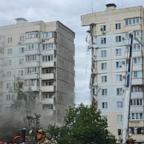Mexico's economics museum aims for solid financial future
MEXICO CITY -- If you think an economics museum would be boring, you've probably never lived in Mexico.
In a country with such a traumatic history of financial busts that the current recession almost looks tame in comparison, the government has opened a kid-friendly museum to try to educate young people on how to avoid such meltdowns.
The Interactive Museum of Economics in Mexico City invites visitors to play with giant coins, make their own Visa credit cards and dress up as traders in a mock stock exchange. Many of the values the museum imparts — keep your debt down, live within your means and invest in the future — are lessons Americans would do well to heed.
"We're trying to create a society that makes better decisions," says Alejandro Zamora, one of the museum's resident economists.
The museum was founded by the Bank of Mexico, the Mexican version of the U.S. Federal Reserve, which has worked to keep the nation's economy stable since Mexico's last financial collapse in 1994, when the peso lost half its value. Zamora and other administrators say it is the only children's museum in the world solely devoted to economics.
The museum occupies an 18th-century former convent in Mexico City's colonial center. It opened in 2006 and attracts about 200,000 visitors a year, mostly grade-school students.
In one section, children can pose with a stack of $4 million in phony 100-peso notes, design and print their own money or wrap themselves in bills the size of beach towels.
In the stock market simulator, high school students don orange and blue vests and roam a trading floor with handheld computers, learning to buy and sell everything from apples to spaceships.
In another exhibit, visitors barter for fish and houses as survivors on a desert island. In another game, they are mayors of small Mexican towns, figuring out how to spend city money.
The concept of "survival of the fittest" is demonstrated with a diorama of children trying to break a piñata. A train set shows how investment works as tiny freight engines carry "capital" between homes, banks and factories.




